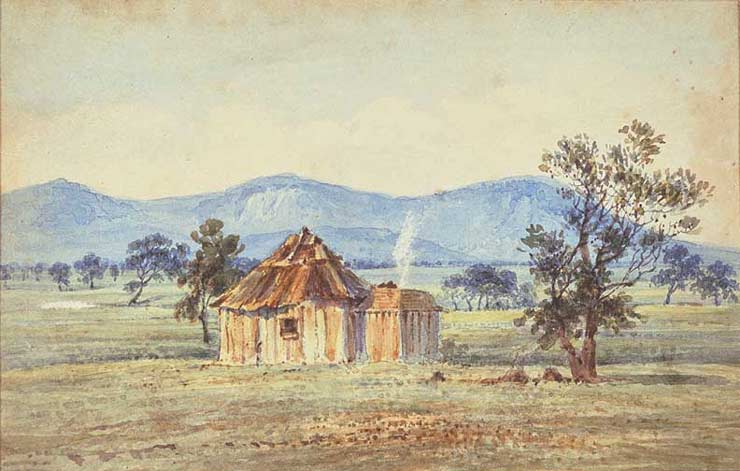 'First hut at Challicum, 1842'
'First hut at Challicum, 1842'
TLF ID R3302
This is a watercolour by Duncan Cooper that depicts the first hut built at Challicum, a sheep run west of Ballarat in western Victoria. The basic hut consists of timber slabs and a roof clad with bark. Mount Langi Ghiran and Mount Cole form part of the mountain range shown behind the hut. The watercolour, which measures 7.4 cm x 11.5 cm, is the second watercolour included in a field album that Cooper called 'The Challicum Sketch Book' and the title is one that Cooper himself inscribed on the mount.
